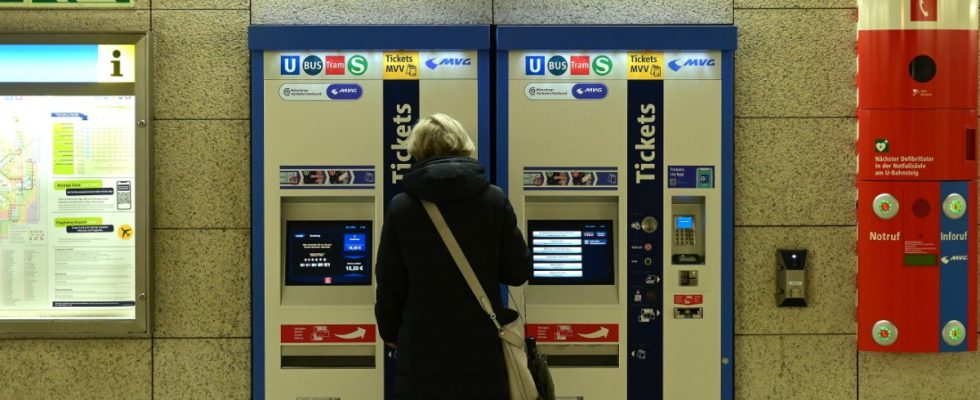The Munich Transport and Tariff Association (MVV) wants to continue to grow. In the next few years, even more customers will be able to travel in large parts of southern Bavaria with uniform tickets and according to uniform tariffs.
Last year, the city and district of Rosenheim, the southern district of Bad Tölz-Wolfratshausen and the district of Miesbach joined the timetable change. As MVV managing director Bernd Rosenbusch explained at the annual meeting, the Weilheim-Schongau district will join the association on January 1, 2025, while the Landsberg am Lech district still lacks the final approval of the local district council to join on the same date. The districts of Garmisch-Partenkirchen and Mühldorf as well as the city and district of Landshut could join at the beginning of 2026.
MVV boss Rosenbusch likes to use the example of Spitzingsee. From Rosenheim to the town of Spitzingsee, a regular DB ticket without a Bahncard cost 20.10 euros. With the MVV tariff you only pay 11.60 euros for a one-way journey. However, for customers who use a Bahncard, journeys actually become more expensive in individual cases. Because the Bahncard is not counted in the MVV. For example, anyone who wanted to go from Munich East to Rosenheim with Bahncard 25 used to get away with just 11.70 euros, and with Bahncard 50 it only cost 7.80 euros instead of 17.10 for the MVV fare. But if you buy an MVV day ticket, you pay 18.50 euros there and back, so you get it cheaper than with the Bahncard 25.
These are calculation games that MVV customers often play. Frequent travelers can afford the Germany ticket for 49 euros anyway. Calculated for individual months, 800,000 Germany tickets have now been sold in the MVV area, plus around 140,000 that were sold by Deutsche Bahn, as Rosenbusch estimates. From his point of view, the Deutschlandticket is a benefit for customers, but, as he says, “a horror” for transport companies. Because long-term financing from politicians is no more guaranteed than the current price of 49 euros. “The way politicians are dealing with this is a nightmare,” said Rosenbusch.
There is also no more money to expand the offering. The amount of service and the frequency of service are crucial for how many people switch from their own car to buses and trains in everyday life.
Wipe instead of stamping
New customers for public transport can not only be won through cheaper tickets or a better offer, but also through better passenger information and the easiest possible use of the means of transport. This is made possible by the “Swipe-and-Ride” ticket system. MVV had 12,000 customers test this function for three years. Anyone who got in swiped to the right in an app on the smartphone display and checked in, so to speak. After the ride, all it took was a swipe to the left to end the ride. The system recognized via GPS where the checked-in passenger left the vehicle and reconstructed the route traveled. The cheapest price was then automatically calculated.
The project was so well received that it will be rolled out to all users at the end of the year. Customers who rarely use public transport no longer have to deal with tariffs and zones. There is no longer any danger of someone buying the wrong ticket and thus involuntarily becoming a fare evader. The system will be integrated into the regular MVV app in the future.
Other digital innovations include the integration of the future regional bike sharing system, which is intended to replace the previous MVG bike, the revision of the cycle route planner and the integration of taxi providers. The MVV app has now been downloaded five million times since its launch in 2010.

